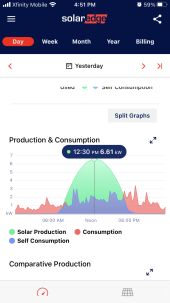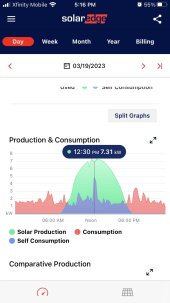Just had solar installed at my house a few months ago by a local company. I have noticed something odd in the monitoring. Each day around 10 am I hit production of 9.96 kw. It stays there for a few hours and then starts declining as the sun goes down.
with Solar Edge SE 100000h inverter grid tied.
This is exactly how it will behave. A 10 kW inverter cannot output more than its rated capacity of 10 kW.
Over panelling is not only common, but good practice.
In your case if you paid for a system which should have had a larger inverter and PV system then you definitely have a case. There is always a chance you were quoted for a system would could not be installed (e.g. lack of roof space), regulatory limits etc.
But making changes without your permission is not good.
Isn't it better to have 2 strings with separate inverters for my 12.8 kW system?
A single large inverter will typically already have two MPPT inputs. Some have three. MPPT inputs may also be designed to accept parallel arrays.
Having more MPPT inputs that having mutliple inverters provide can be useful, especially with multi-faceted array design if the PV is on a complex rooftop.
But more inverters also means more cabling, more space taken up, more connections, and sometimes more challenging communications.
In some instances its desirable, such as when operating with an AC coupled battery system (e.g. Tesla Powerwall 2) which will have a limit on the size of the inverter/PV system it can control during grid outages (IOW to keep at least some of your PV online during a grid outage).
Good system design is a function of many parameters.




